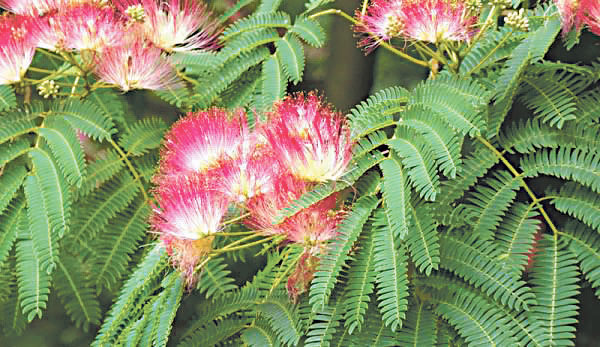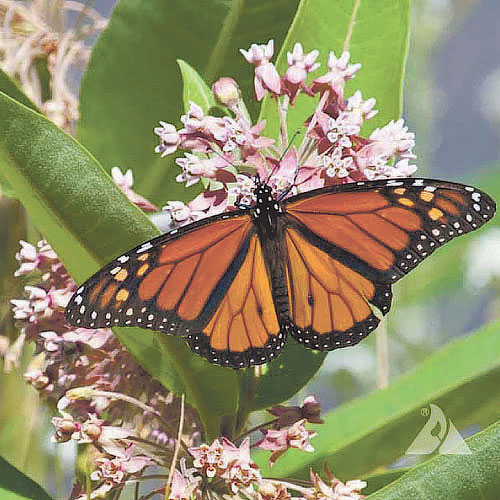by Christine Maccabee
Summer Flowering
“When the pink mimosa blooms,
it fills the air with the sweet perfume
of summertime fair,
butterflies everywhere.”
~ (lyrics from songpoem “Dreaming of Spring”
by Christine)
It is nearly impossible to believe that spring is over already. No sooner do the crocus and violets appear that they seem to be gone. Other spring flowers such as the wild phlox that graced our roadsides have also gone, with all their purple, white, and pink beauty. Luckily, their seeds, roots, and bulbs live on for next spring’s show.
Now that summertime is upon us, another stage of flowers is here, some coming sooner than others. The common milkweed, with its broad leaves as habitat for the Monarch butterfly, is beginning to get its round cluster of flowers. I have been surprised to learn that many people are not aware of these wonderful flowers, which smell heavenly to me. Bees and butterflies flock to these flowers for nectar and pollen, pollinating them at the same time, so as to produce their fluffy seedpods we all love to see in late summer.
Another favorite of mine is a non-native tree, mimosa, which also has wonderful pinkish flowers, serving as food for our pollinators. Native or not, I allow it to thrive here at Mystic Meadows. It, too, delivers an incredible fragrance to the air that, in my experience, is nature’s aroma therapy. Just to walk out my door and breath in the sweet air while it is blooming transforms my mood.
Other wonderful pollinator magnets—as I call them—are the light purple bergamot flowers and amazing red monarda. On the verge of blooming in my gardens, as of this writing, they attract not only bees and butterflies, but the fascinating hummingbird moth as well. The hummingbird moth looks like a tiny hummingbird, but it is actually a daylight feeding moth that needs nectar as its food. Most moths do, but usually at night. If you ever get a moonflower vine to grow with its large white flowers, which only open at night, you will see a wonder. I am attracted to its wonderful perfume like a moth.
So many flowers come and go, all too quickly, though there are always “second blooms” (another subject for another time). The variety of flowers in the world is astounding; just in our little corner of the world, the diversity is one of which some people are only now discovering. For 30 years, I have been allowing many wild plants to grow to maturity on my property, and have been rewarded by the tall evening primerose with its yellow blooms, orange day lillies, jewelweed’s yellow or orange flowers, the powder blue flowers of chicory, more subtle flowers of edible ground cherry and lambs quarters, wild blue lobelia, the flower spikes of mullein, various clovers, and many, many more. As well, I love many non-native flowers, such as the amazing red poppies and blue larkspur that pop up wherever they planted a seed last year. Sunflowers and zinnias are favorites of many, including our neighborhood bees!
Yes, from season to season, the sometimes slow, sometimes fast, appearance and then disappearance of these flowering multitudes, leading to colorful late summer goldenrods, purple ironweed, and Canadian asters, is a show not to be missed.
Indeed, flowers are Creation’s painter’s pallet. Exquisite colors and shapes. Enjoy them while they are here, before the bitter, cold winds of winter blow in and we begin to long for spring all over again!


The common milkweed attract bees and butterflies, which flock to these flowers for nectar and pollen, (right) Non-native tree, mimosa, delivers an incredible, pleasing fragrance to the air.

